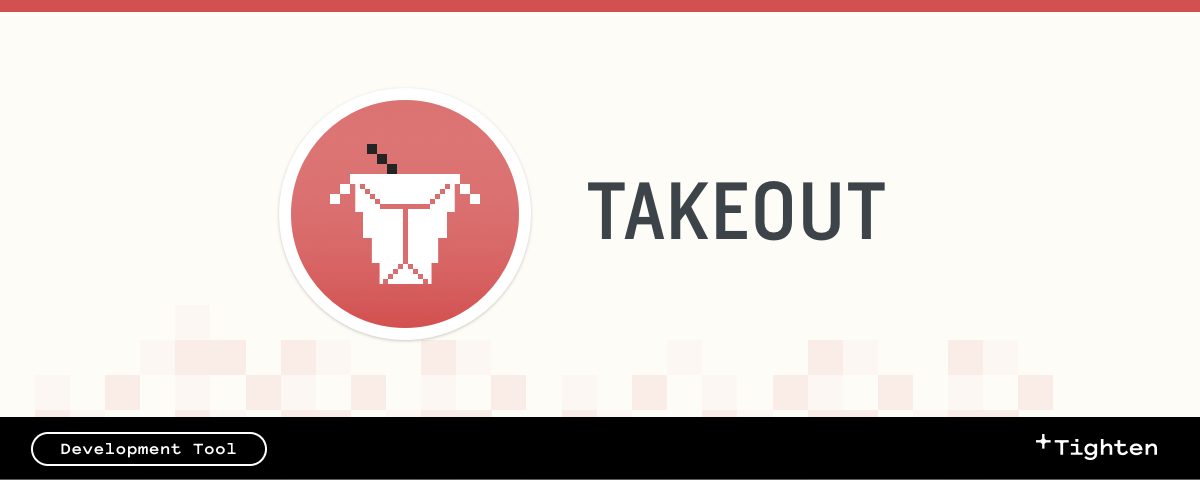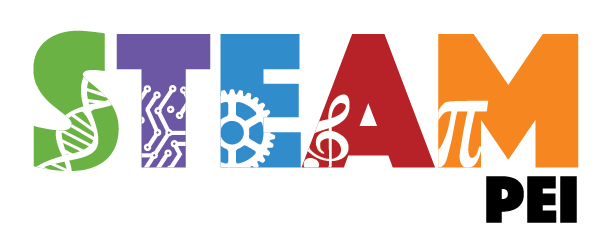
Takeout



Takeout is a CLI tool for spinning up tiny Docker containers, one for each of your development environment dependencies.
It's meant to be paired with a tool like Laravel Valet. It's currently compatible with macOS, Linux, Windows 10 and WSL2.
With takeout enable mysql you're running MySQL, and never have to worry about managing or fixing Homebrew MySQL again.
But you can also easily enable ElasticSearch, PostgreSQL, MSSQL, Mongo, Redis, and more, with a simple command. For a current list of services, look at the classes available in this directory: https://github.com/tighten/takeout/tree/main/app/Services
Requirements
macOS, Linux, Windows 10 or WSL2 Composer installed Docker installed (macOS: Docker for Mac, Windows: Docker for Windows)Installation
Install Takeout with Composer by running:
composer global require tightenco/takeout
Make sure the ~/.composer/vendor/bin directory is in your system's "PATH".
Usage
Run takeout and then a command name from anywhere in your terminal.
One of Takeout's primary benefits is that it boots ("enables") or deletes ("disables") Docker containers for your various dependencies quickly and easily.
Because Docker offers persistent volume storage, deleting a container (which we call "disabling" it) doesn't actually delete its data. That means you can enable and disable services with reckless abandon.
Enable a service
Show a list of all services you can enable.
takeout enable
Enable specific services
Passed the short name of one or more services, enable them.
takeout enable mysql takeout enable redis meilisearch
Enable services with default parameters
If you want to skip over being asked for each parameter and just accept the defaults. This also works with multiple services in one command.
takeout enable mysql --default takeout enable redis meilisearch --default
Passthrough Container Arguments
You may specify extra arguments to the container after a -- sepatator:
takeout enable mysql -- -hsome.mysql.host -usome-user
Notice that these are arguments for the container Entrypoint, not extra docker run options (see below).
Extra docker run Options
Under the hood, the takeout enable command generates a docker run command. Sometimes you may want to specify extra options to the docker run command such as an extra environment variable or an extra volume mapping. You can pass a string with all the extra docker run options using the --run= option:
takeout enable mysql --run="{docker-run-options}"
Which would generate the following command:
docker run {docker-run-options} {service-options} mysql/mysql-server
Where {docker-run-options} are the options you specify inside the --run option and {service-options} are generated based on the default options for that service.
Mixing docker run Options With Container Arguments
You may mix and match the run options with the container arguments:
takeout enable mysql --run="{docker-run-options}" -- -hsome.mysql.host -usome-user
Disable a service
Show a list of all enabled services you can disable.
takeout disable
Disable specific services
Passed the short name of one or more services, disable the enabled services that match them most closely.
takeout disable mysql takeout disable redis meilisearch
Disable all services
takeout disable --all
Start a stopped container
Show a list of all stopped containers you can start.
takeout start
Start specific stopped containers
Passed the container ID of one or more stopped containers, start the stopped containers that matches them.
takeout start {container_id} takeout start {container_id1} {container_id2}
Start all containers
You may pass the -all flag to start all enabled containers.
takeout start --all
Stop a running container
Show a list of all running containers you can stop.
takeout stop
Stop specific running containers
Passed the container ID of one or more running containers, stop the running containers that matches them.
takeout stop {container_id} takeout stop {container_id1} {container_id2}
Running multiple versions of a dependency
Another of Takeout's benefits is that it allows you to have multiple versions of a dependency installed and running at the same time. That means, for example, that you can run both MySQL 5.7 and 8.0 at the same time, on different ports.
Run takeout enable mysql twice; the first time, you'll want to choose the default port (3306) and the first version (5.7), and the second time, you'll want to choose a second port (3307), the second version (8.0) and a different volume name (so that they don't share the same mysql_data).
Now, if you run takeout list, you'll see both services running at the same time.
+--------------+----------------+---------------+-----------------------------------+ | CONTAINER ID | NAMES | STATUS | PORTS | +--------------+----------------+---------------+-----------------------------------+ | 4bf3379ab2f5 | TO--mysql--5.7 | Up 2 seconds | 33060/tcp, 0.0.0.0:3306->3306/tcp | | 983acf46ceef | TO--mysql--8.0 | Up 35 seconds | 33060/tcp, 0.0.0.0:3307->3306/tcp | +--------------+----------------+---------------+-----------------------------------+
FAQs
Will this enable the PHP drivers for me via PECL?
Sadly, no.
If I disable a service but Takeout still shows the port as taken, how do I proceed?
First, run lsof -i :3306 (where 3306 is the port that's unavailable.)
If you see output like this:
com.docke 936 mattstauffer 52u IPv6 0xc0d6f0b06d5c4efb 0t0 TCP localhost:mysql->localhost:62919 (FIN_WAIT_2)
TablePlus 96155 mattstauffer 16u IPv4 0xc0d6f0b0b6dccf6b 0t0 TCP localhost:62919->localhost:mysql (CLOSE_WAIT)
The solution is to just close your database GUI, and then it should be released.
Why would you use this instead of `docker-compose`?
Using docker-compose sets up your dependencies on a project-by-project basis, which is a perfectly fine way to do things. If it makes more sense to you to have a single copy of each of your dependencies for your entire global environment, Takeout makes more sense.
Will disabling a service permanently delete my databases?
Nope! Your data will stick around! By default almost all of our services use a "volume" to attach your data to for exactly this reason.
So, when you disable the MySQL service, for example, that volume--with all your data in it--will just sit there quietly. And when you re-enable, as long as you attach it to the same volume, all your data will still be there.
Future plans
The best way to see our future plans is to check out the Projects Board, but here are a few plans for the future:
Electron-based GUIself-remove command: Deletes all enabled services and then maybe self-uninstalls?
upgrade: destroys the old container, brings up a new one with a newly-specified tag (prompt user for it, default latest) and keeps all other parameters (e.g. port, volume) exactly the same as the old one
pt/passthrough: proxy commands through to docker (./takeout pt mysql stop)
Deliver package in a way that's friendly to non-PHP developers (Homebrew? NPM?)
Allow other people to extend Takeout by adding their own plugins (thanks to @angrybrad for the idea!)
Process for release
If you're working with us and are assigned to push a release, here's the easiest process:
Visit the Takeout Releases page; figure out what your next tag will be (increase the third number if it's a patch or fix; increase the second number if it's adding features) On your local machine, pull down the latest version ofmain (git checkout main && git pull)
Build for the version you're targeting (php ./takeout app:build)
Run the build once to make sure it works (php ./builds/takeout list)
Commit your build and push it up
Draft a new release with both the tag version and release title of your tag (e.g. v1.5.1)
Use the "Generate release notes" button to generate release notes from the merged PRs.
Hit Publish release
Profit
版权声明:
1、该文章(资料)来源于互联网公开信息,我方只是对该内容做点评,所分享的下载地址为原作者公开地址。2、网站不提供资料下载,如需下载请到原作者页面进行下载。
3、本站所有内容均由合作方或网友上传,本站不对文档的完整性、权威性及其观点立场正确性做任何保证或承诺!文档内容仅供研究参考学习用!
4、如文档内容存在违规,或者侵犯商业秘密、侵犯著作权等,请点击“违规举报”。



